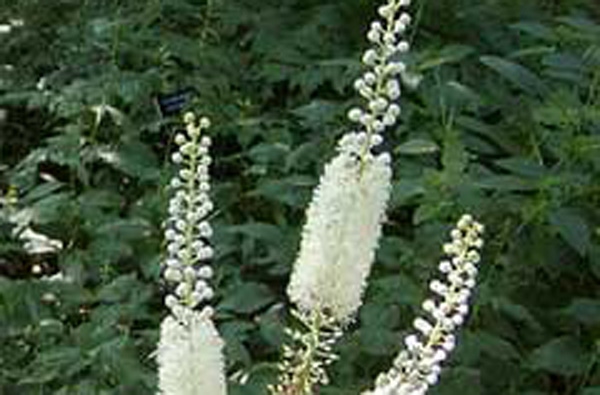The document reviews 36 laboratory methods for the analysis of black cohosh root and rhizome to ensure proper identity and to detect potential adulterants.
December 8, 2015

The ABC-AHP-NCNPR Botanical Adulterants Program has published a new Laboratory Guidance Document on black cohosh (Actaea racemosa) root and rhizome. The new LGD is part of the Program’s series of comprehensive, authoritative, extensively peer-reviewed and up-to-date summaries and assessments of analytical methods for the authentication of botanical ingredients and the detection of potential adulterants.
The approximately 8,000-word document on black cohosh is the third publication in the ongoing series of Laboratory Guidance Documents. The program released lab guidance for bilberry (Vaccinium myrtillis) fruit extract in August and for skullcap (Scutellaria lateriflora) herb in January. Published and unpublished analytical reports have shown that each of these herbs is subject to adulteration in both U.S. and international markets.
“Adulteration of black cohosh, mainly with herbal ingredients from Chinese Actaea species, remains a problem in the dietary supplement industry,” noted Stefan Gafner, PhD, chief science officer of ABC and technical director of the Botanical Adulterants Program. “In the absence of easily recognizable morphological features, e.g., when cut or powdered roots and rhizomes, or root and rhizome extracts are purchased, authentication of black cohosh material is difficult.”
The Program’s LGDs are intended for quality control personnel and lab technicians in the herbal medicine, botanical ingredient, dietary supplement and food sectors of industry to help them choose the most appropriate techniques and methods for their specific analytical needs. The LGDs provide reliable, expert guidance on suitable methods to comply with the mandate to establish identity as part of the testing requirements (identity, purity, strength and composition) outlined in the U.S. Food and Drug Administration’s current Good Manufacturing Practices for dietary supplements and/or conventional foods, as well as government-mandated cGMPs in other countries.
According to the black cohosh LGD, “Authentication of cut or powdered black cohosh rhizome is challenging due to the existence of closely related and sometimes co-habiting Actaea species with similar morphological features and chemical composition.… The need for sound analytical methods is further emphasized by the abundance of materials from China sold as ‘black cohosh’ but composed of root and sub-aerial material from entirely different species.”
Dr. Gafner explained that the new BAP publication is designed to help address this confusion. “This Laboratory Guidance Document discusses the advantages and shortcomings of various analytical approaches to authenticate black cohosh and to detect adulteration, and it will help in making an educated choice when selecting the appropriate method in a quality control setting,” he said.
The black cohosh LGD’s conclusions are based on a thorough review of available analytical methods (e.g., from official and unofficial compendia [e.g., pharmacopeias], as well as the peer-reviewed scientific literature) and input from peer reviewers from academia, government and industry in multiple countries. The black cohosh LGD was peer-reviewed by 20 such experts. The primary assessment of each method is based on its performance characteristics (i.e., suitability in detecting known adulterants, if they are present in a tested material); labor and analysis time comprise the secondary evaluation criteria.
“We have received overwhelmingly positive feedback on our previous two Lab Guidance Documents from dozens of quality control and analytical laboratory directors in the herb and dietary supplements industry as well as directors at third-party laboratories,” said Mark Blumenthal, founder and executive director of the nonprofit American Botanical Council and director of the Botanical Adulterants Program. “Experts in academia, government and industry recognize the high level of value of these documents. They are a strong tool in helping to choose an appropriate analytical method to authenticate botanical materials and extracts and to detect possible adulteration.”
Like the previous two LGDs in this series of technical publications, the black cohosh LGD begins with a statement of purpose and scope, followed by a short overview of the botanical nomenclature of the species and its known adulterants. Also included are sections on analytical techniques (generally including macroscopic, microscopic, chemical, and genetic assays) and a phytochemical composition overview of the species and known adulterants. The LGDs conclude with a concise table of strengths and limitations of the various assays. Complete references are provided with links to original source documents.
The black cohosh guidance document reviews 36 analytical methods, including macroscopic and microscopic analyses, DNA-based tests, high-performance thin-layer chromatography (HPTLC), high-performance liquid chromatography (HPLC) and nuclear magnetic resonance (NMR), among others. The LGD includes three tables, five figures, and an appendix with expert comments on published HPLC methods for A. racemosa.
LGDs are available to industry members, researchers, health professionals and the general public at no cost as part of the Botanical Adulterants Program’s policy of producing freely available educational documents on adulteration, made possible through funding by the program’s underwriters and supporters. So far, more than 170 American and international parties have financially supported or otherwise endorsed the program.
To date, the ABC-AHP-NCNPR Botanical Adulterants Program has published five extensively peer-reviewed and referenced articles on the history of adulteration, adulteration of skullcap herb, and adulteration of bilberry fruit extract, so-called “grapefruit seed extract,” and a comprehensive 12,500-word article on black cohosh adulteration. These open-access articles are available on the Program’s webpage. The Program also publishes a quarterly e-newsletter, the "Botanical Adulterants Monitor," that highlights new scientific publications related to botanical authenticity and analysis to detect possible adulteration, recent regulatory actions, and Program news. BAP plans to publish its fourth Lab Guidance document on the detection of adulterants in so-called “grapefruit seed extract” in the coming months.
You May Also Like


